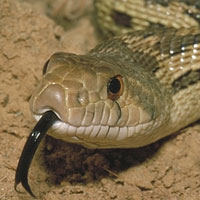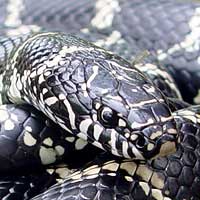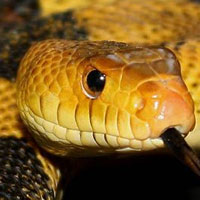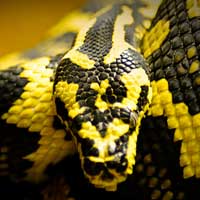Everything You Need to Know About the Steppes Rat Snake
The Steppes Rat Snake, scientifically known as Elaphe dione, belongs to the Colubridae family, which is the largest family of snakes, encompassing a diverse range of non-venomous and mildly venomous species known for their adaptability and widespread distribution across various habitats worldwide.
Scientific Name: Elaphe dione
Snake Family: Colubridae
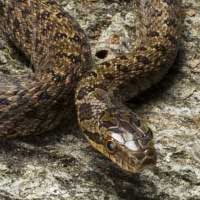
Introduction to the Steppes Rat Snake
The Steppes Rat Snake (*Elaphe dione*), also known as Dione’s Rat Snake, is a non-venomous species native to the grasslands and steppes of Eastern Europe and Central Asia. This adaptable snake is renowned for its hardiness and calm demeanor, making it a favorite among reptile enthusiasts. With the right care, the Steppes Rat Snake thrives in captivity, offering a rewarding experience for keepers of all levels.
Creating the Ideal Habitat for the Steppes Rat Snake
To ensure the Steppes Rat Snake thrives, replicating its natural environment is essential. These snakes are native to diverse habitats, including grasslands, rocky areas, and forest edges. Key habitat elements include:
- Enclosure Size: Provide a minimum of a 30-40 gallon tank for adults, ensuring ample space for movement.
- Temperature Gradient: Maintain daytime temperatures of 75-85°F with a basking spot at 90°F, and nighttime temperatures of 65-70°F.
- Humidity: Keep humidity levels between 40-60%, achievable with light misting and proper ventilation.
- Substrate: Use aspen shavings, cypress mulch, or a sand-soil mix to replicate their natural ground cover.
- Enrichment: Include hiding spots, climbing branches, and rocks to encourage exploration and natural behaviors.
Below is a quick reference table for habitat setup:
| Habitat Element | Specifications |
|---|---|
| Enclosure Size | 30-40 gallons |
| Temperature | 75-85°F (day), 65-70°F (night) |
| Humidity | 40-60% |
| Substrate | Aspen shavings, cypress mulch, sand-soil mix |
Feeding the Steppes Rat Snake: Diet and Guidelines
The Steppes Rat Snake is a carnivorous species with simple dietary needs. Feeding recommendations include:
- Juveniles: Feed pinky mice every 5-7 days.
- Subadults: Offer small to medium-sized mice every 7-10 days.
- Adults: Provide adult mice or small rats every 10-14 days.
- Prey Type: Use pre-killed prey to prevent injuries and ensure stress-free feeding.
- Hydration: Always ensure fresh water is available in a shallow dish.
Consistency in feeding schedules promotes healthy growth and vitality.
Understanding the Behavior and Temperament of the Steppes Rat Snake
The Steppes Rat Snake is known for its adaptability and calm demeanor. Key behavioral traits include:
- Activity Level: These snakes are primarily diurnal, making them engaging to observe during the day.
- Climbing Abilities: They enjoy climbing, so providing vertical space and enrichment is beneficial.
- Temperament: Generally docile, they tolerate handling well and rarely exhibit defensive behaviors.
- Stress Indicators: Signs such as excessive hiding or refusal to eat may indicate stress or unsuitable habitat conditions.
Providing a safe and enriched environment helps reduce stress and ensures your snake remains active and healthy.
Health and Lifespan of the Steppes Rat Snake
With proper care, the Steppes Rat Snake can live 15-20 years in captivity. Key health considerations include:
- Common Health Issues: Respiratory infections, improper shedding, and mite infestations are common concerns.
- Preventative Measures: Maintain stable temperature and humidity levels, and clean the enclosure regularly.
- Veterinary Care: Regular check-ups with an exotic animal veterinarian ensure early detection of potential issues.
- Observation: Monitor for signs of illness, such as lethargy, loss of appetite, or unusual behavior.
Proper husbandry practices and consistent care ensure a long and healthy life for your snake.
Reproduction and Breeding of the Steppes Rat Snake
Breeding Steppes Rat Snakes in captivity requires understanding their reproductive habits. Key factors include:
- Breeding Season: Typically occurs in spring following a winter brumation period.
- Clutch Size: Females lay 6-12 eggs per clutch.
- Incubation: Eggs should be incubated at 80-85°F for 50-60 days.
- Hatchling Care: Provide small enclosures and appropriately sized prey for juveniles.
Successful breeding requires careful preparation and monitoring of environmental conditions.
Tips for Handling and Caring for the Steppes Rat Snake
Proper handling and care are essential for building trust and ensuring the well-being of your Steppes Rat Snake. Follow these tips:
- Handle your snake gently, supporting its entire body to reduce stress.
- Avoid handling immediately after feeding to prevent regurgitation.
- Keep the enclosure clean and enriched with climbing structures and hiding spots.
- Monitor their health and behavior regularly for signs of stress or illness.
- Establish a consistent routine for feeding, cleaning, and interaction.
With proper care and attention, the Steppes Rat Snake can become a rewarding and fascinating pet for any reptile enthusiast.
Other Snakes In This Species
 Aesculapian Rat Snake
Aesculapian Rat Snake Amur Russian Rat Snake
Amur Russian Rat Snake Bairds Rat Snake
Bairds Rat Snake Black Rat Snake
Black Rat Snake Chinese Twin-spotted Rat Snake
Chinese Twin-spotted Rat Snake Diadem Rat Snake
Diadem Rat Snake Diones Rat Snake
Diones Rat Snake Eastern Fox Snake
Eastern Fox Snake Everglades Rat Snake
Everglades Rat Snake Four-lined Rat Snake
Four-lined Rat Snake Gray Rat Snake
Gray Rat Snake Great Plains Rat Snake
Great Plains Rat Snake Green Rat Snake
Green Rat Snake Ladder Rat Snake
Ladder Rat Snake Leopard Rat Snake
Leopard Rat Snake Mandarin Rat Snake
Mandarin Rat Snake Radiated Rat Snake
Radiated Rat Snake Steppes Rat Snake
Steppes Rat Snake Texas Rat Snake
Texas Rat Snake Trans-Pecos Rat Snake
Trans-Pecos Rat Snake Trinket Rat Snake
Trinket Rat Snake Yellow Rat Snake
Yellow Rat Snake



